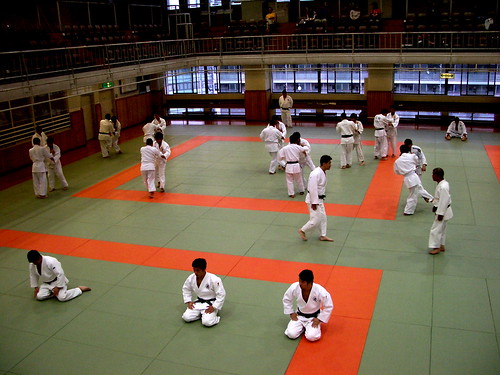F) BENCH PENALTIES
1. Offences leading to a 2 minute bench penalty:
-When a player kicks an opponent's stick.
-When a field player plays the ball above knee level with any part of his stick or his foot.
-When a player tackles or trips an opponent.
-When a player obstructs an opponent.
-When a field player actively obstructs the goalkeeper's throw-out.
-When a player violates the 3 m rule at a hit-in or a free-hit
-When a field player participates in play without a stick.
-When a field player stops or plays the ball when lying or sitting down.
-When a field player stops or plays the ball with his hand, arm or head.
2. Offences leading to a 5 minute bench penalty:
-When a field player, performs violent or dangerous strikes with his stick.
-When a field player uses his stick to hook an opponent's body.
-When a player throws his stick or other equipment on the rink to hit or try to hit the ball.
-When a player throws himself towards an opponent or attacks an opponent violently.
-When a player tackles, throws or trips an opponent against the board or the goal cage.
-When a player commits repeated offences, each leading to a 2 minute bench penalty.
G) Review: MAIN RULES OF FLOORBALL:
You can: 
- Hit or drive the ball with both sides of the stick
- Play against the walls or rink
- Stop the ball with the stick, your chest or foot.
- Drive the ball with your foot to your own stick
- Steal the ball from an opponent
- Push an opponent with the posession of the ball or who is near you
You can not :
(and it is punished with a free hit:)
- Raise the stick over knee level
- Get any part of your body inside the goal area (attacking players only)
- Stop a ball with your hands or head
- Play the ball while you are lying on the floor
- Raise or move your opponent´s stick
- Get in your opponent´s way with your body or push him with your body
(and it is punished with a penalty shot:)
- Get any part of your body inside the goal area (defending players only)
- Attack your opponent violently or playing in a dangerous way
- Hit a player
- Place your stick in between your opponent´s legs.


















